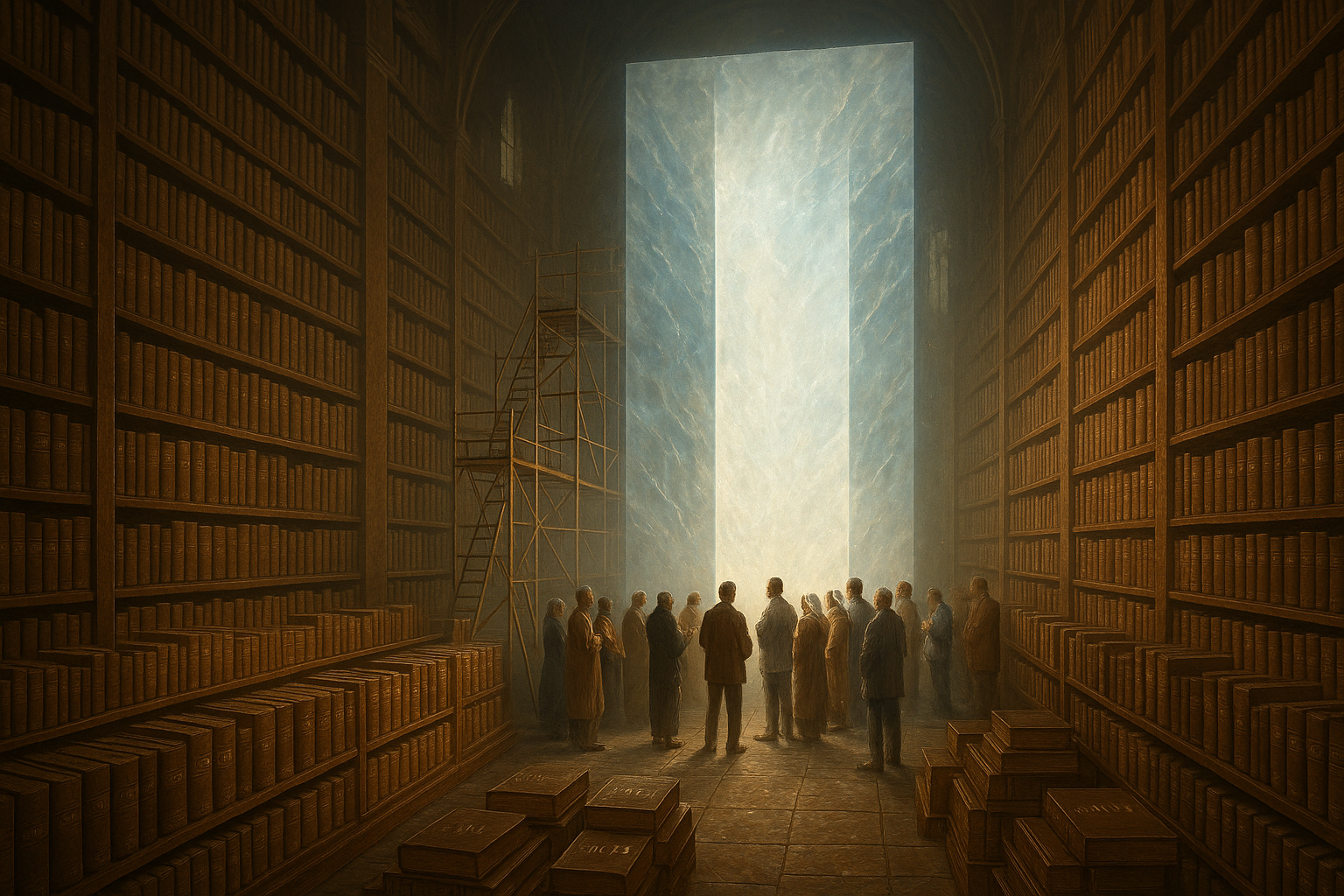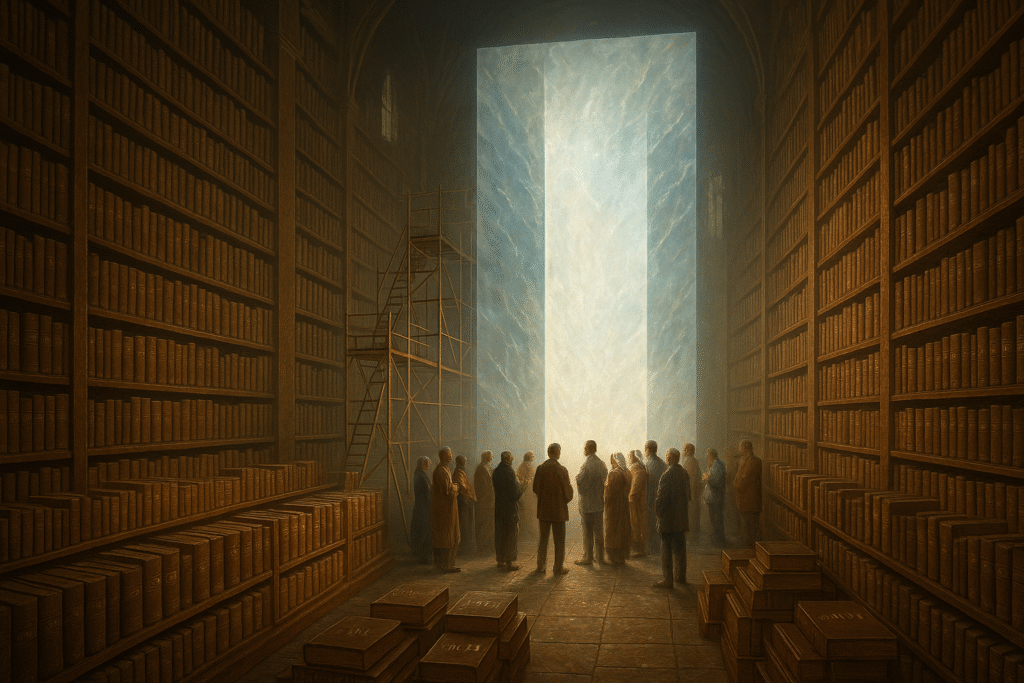Physical Address
304 North Cardinal St.
Dorchester Center, MA 02124
Physical Address
304 North Cardinal St.
Dorchester Center, MA 02124
With Michael Walker
With Michael Walker

The Truth, as it presents itself……

There is a kind of comfort that settles over a culture when it believes it has captured reality in a net of words. A phrase from a respected scientist—science requires no faith because it can be checked—sounds like a lighthouse in a storm. But lights can create shadows, and certainties can calcify into catechisms. This deep dive begins by honoring the brilliance of science as a method for describing the measurable world, while refusing the pretense that a description equals the thing described. What follows is not an attack on science, but a restoration of its rightful posture: decisive enough to act today, and humble enough to change tomorrow. The reality is constant, but the map is not the territory; it is pencil on paper, revised as the landscape emerges from the fog. The honest banner over scientific knowledge should read, this is our best tested description of reality at this time. We expect it to grow clearer and possibly to change as new evidence emerges. The reality itself does not change, but our picture of it does.
Begin with an ordinary textbook sentence that once sounded absolute: all fish are cold-blooded. For generations that line appeared in classrooms and quizzes as if engraved in stone. Then the ocean yielded a surprise. Tunas and certain sharks had already complicated the picture with regional endothermy, and finally the opah emerged as a warm-blooded fish in a fuller sense, generating and retaining heat throughout its body. The single sentence shattered into a more precise paragraph. The world did not change; the description did. This is how science works at its best, not as a shrine to final statements but as scaffolding that adjusts while the cathedral of understanding is still under construction. A scaffolding that claims to be the cathedral is dangerous; a scaffolding that admits it is temporary becomes a tool for reaching higher.
This distinction between fact and truth is the spine of the entire argument. Truth names reality as it is: the coastline exists whether or not a cartographer has traced it accurately. A scientific fact, in practice, is a claim about reality drawn from measurements, instruments, and models at a particular moment in history. The coastline does not evolve, but coastlines can be drawn with poor light, blunt pencils, and outdated surveys. As instruments sharpen, as vantage points shift from shoreline to satellite, the map changes. When a culture mistakes the latest map for the land itself, it confuses a human sketch with the granite underneath. Retaining this distinction is not wordplay; it is the difference between reverence for reality and reverence for our own descriptions.
The trouble arises in how knowledge is packaged for public life. Provisional models are often printed as permanent facts, their conditions and confidence brackets shaved off for the sake of simplicity and authority. A sentence fit for a lab notebook—under these assumptions and within these ranges, this model best accounts for the observations—shrinks to a slogan on a classroom wall. The simplification is understandable; teaching requires clarity. But clarity without contingency breeds illusion. Students memorize finished answers instead of learning how answers are made and remade. Texts pose as monuments rather than mile markers. The social result is a posture that equates fact with truth and quietly marginalizes anything that does not bow to the latest formulation.
This posture does not stay inside lecture halls. It becomes a cultural gait. Academies build hierarchies that reward defense of reigning paradigms. Institutions adopt the air of priesthoods, with experts as curators of certainty and dissenters cast as unserious. The point is not that science intends to become a creed; the point is that the presentation of provisional conclusions as settled truth creates the social conditions in which that transformation occurs. The method is humble; the marketing is not. The method is a lens; the marketing pretends the lens is the eye.
Modern discourse then pours fuel on the fire by softening truth itself into preference, framing reality as competing points of view—this is your truth, that is their truth—until the foundation slips into sand. But a wall in a room is not one person’s wall and a different person’s absence. The wall remains regardless of angle or mood. Reality is self-revealing; it does not ask permission to be true. Fulfilled prophecies, historical testimony, and public events stand in the open; they do not depend on subjective acknowledgement to exist as realities. The human role is not to manufacture truth by opinion but to turn and look when truth reveals itself. Denial does not erase a wall, and perspective does not create it. Recovering this distinction rescues science from an impossible burden and rescues culture from a relativism that dissolves meaning.
Against this backdrop, it helps to set one constant anchor beside our shifting models. Some realities arrive as public history that does not require periodic revision to remain real. They stand like mountains above cloudbanks, visible when the fog lifts and unchanged when it returns. Prophetic words fulfilled in observable events, eyewitness testimony preserved across centuries, and the continued existence and regathering of a nation against historical odds function in this register. Such realities do not compete with scientific models; they simply occupy a different layer of knowing. One is measurement-driven description that improves with instrumentation. The other is the recognition of a disclosed reality that does not await recalculation to keep being what it is. Placing these side by side does not dethrone science; it dethrones arrogance.
From here a constructive reframing becomes possible. Scientific knowledge should be spoken with five clear notes: claim, scope, confidence, edge, expectation. Claim: based on converging lines of evidence, here is the current best model. Scope: it holds under these conditions and assumptions. Confidence: here is how robust it remains across methods and replications. Edge: here are the known limits, anomalies, and live questions. Expectation: refinement is anticipated as data and tools improve. This way of speaking guards the method’s power while disarming the pretense of finality. It invites collaboration rather than catechism. It honors evidence without weaponizing the word fact.
If the presentation changes, the culture changes. Imagine textbooks that version their claims the way engineers version code; alongside the statement sits a date-stamp, a conditions-of-validity box, a short list of known anomalies, and an update history. Imagine lecture halls where at least one once-standard claim is dissected each term to show how it advanced knowledge until its edges cracked, and how that cracking was not a failure but the engine of discovery. Imagine assessments that reward tracing the logic of a model, naming its assumptions, and identifying where new data would most likely refine it. A generation taught in this way would not be indoctrinated into certainty; it would be trained in disciplined wonder.
All of this has been building toward a simple revelation. Facts are not truth; they are momentary descriptions. Truth reveals itself; facts try to keep up. The world does not change when a sentence in a book changes; the sentence changes because the world remains what it is. The right response is not to scorn science for its revisions but to require honesty about them, to banish the tone that sneers at other forms of knowing, and to restore humility to the public face of a method that depends on humility to function at all. The cold-blooded fish line did not indict reality; it indicted our premature confidence. The opah did not embarrass science; it embarrassed slogans. The discovery was not a scandal but a teacher.
The conclusion is a call, not a scolding. Science does not need to pretend its models are final to be powerful. Medicine does not need a halo of infallibility to save lives. Physics does not need to disparage other domains to move rockets and read the heavens. What is needed is a shared vow of epistemic honesty: to speak with clarity and contingency, to publish with conditions and confidence, to teach methods rather than mantras, and to honor truths that have endured scrutiny beyond the laboratory. Let classrooms and journals alike carry a quiet inscription: this is our best tested description of reality at this time; we expect it to grow clearer and possibly to change as new evidence emerges. The reality itself does not change, but our picture of it does. As maps are redrawn and instruments sharpened, let the lens remain pointed at what is—unchanged by our certainties, unmoved by our doubts, and ever willing to reveal itself to those who will look without arrogance and learn without fear.